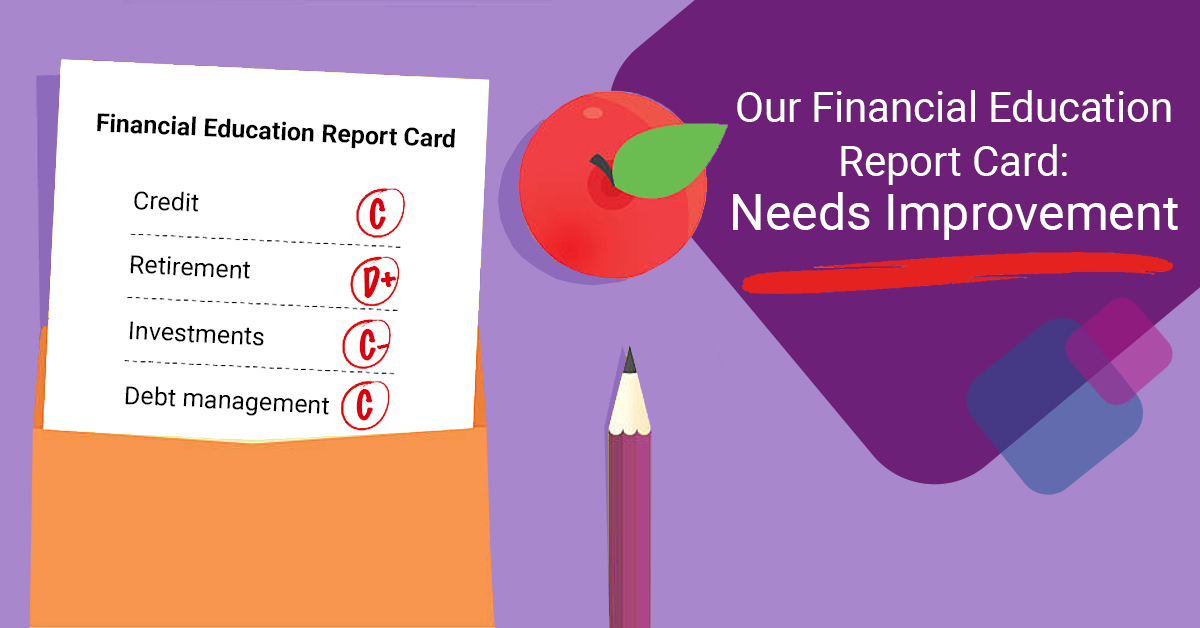If you asked me how I’d feel about taking a personal finance class in school when I was growing up in a small town near St. Louis, Missouri, I probably would’ve told you it sounds better than trigonometry and chemistry on the list of classes I had to take. They weren’t my best subjects.
Now that I’m a few years older, and I hope a bit wiser, I can promise you I would answer that question a lot differently if asked today.
I now know there are some instances in life where it makes sense to learn by making mistakes, but money is not one of them. Like many people, I had my first experience with credit and money management when I took out a student loan. I was the first person in my family to go to college, so we didn’t know what we were getting ourselves into. Unfortunately, I learned the impact of poor borrowing habits and high interest rates the hard way – for many, many years.
Learning about money, and especially credit, by making mistakes can lead to long term damage to your financial health, which is one of the many reasons I’m passionate about financial education in schools today. Effective financial education programs will help young adults be more successful older adults.
We know that if a young person has a basic understanding of how credit works, they tend to be less likely to overextend their credit card use. It’s one of the reasons Experian was the first in its industry to invest in youth financial education, as a founding partner of the Jump$tart Coalition for Personal Financial Literacy two decades ago. Over that time, we’ve continued to support the organization.
Eleven years ago, we launched the Jump$tart National Educator Conference that offers teachers around the country tools and information about personal finance to take back to their classrooms. Last year, more than 350 teachers attended the conference. This year alone they will teach more than 48,000 students across the country about personal finance. It’s been a very powerful partnership.
While we’ve made a lot of progress in educating our youth about personal finance, there is still a lot of work to do. As of this year, 21 states across the U.S. require high school students to take a personal finance course, an increase of 4 states since 2018, according to a recently released report from the Council for Economic Education.
This report also reinforced the idea that students who receive financial education borrow more sensibly. They tend to look at low-cost over high-cost financing options and they are more likely to apply for aid, receive grants and accept federal loans, which all tend to be lower interest forms of borrowing. Applying for grants or low-cost financing options could have made a serious impact on my financial health as a young adult. Considering student loan debt has now reached $1.56 trillion, it’s time we all start paying more attention to the positive impact financial education can have on our young people as well as our economy.
Not only is financial education in schools the right thing to do, we know it’s something students want. We recently surveyed a group of more than 500 high school graduates to learn what they want when it comes to finance and credit education. Some key findings include:
- 49% of Gen Z consumers surveyed said they found financial topics to be somewhat interesting or very interesting—and 11% of them even said they loved learning about them.
- Only about one-third—36%—of Gen Z consumers said they had taken a class on a financial topic, and among that group, many of them still had looming financial questions.
- Of the 64% that had never taken a financial education class, 43% reported wanting to learn to save money, 38% wanted to learn how to manage their expenses, and another 36% said they wanted to take a class that taught them how to file their taxes.
- A large majority—76%—of Gen Z consumers said that they thought their high school should have offered a class on managing finances.
So, what can we do to help ensure our young people grow up to be financially healthy adults?
If you’re a parent and want to find out if your children’s school offers financial education, head to https://checkyourschool.org/. If your school is not on the list, learn how you can become engaged in this initiative by working with JumpStart.
In the meantime, you can also find free, educational resources on our website to help teach your children about personal finance and credit. We have prepared a simple lesson plan, presentations and online brochures that are free to download, and you can find answers to commonly asked questions about personal finance, credit, fraud, identity theft and more on our Ask Experian blog and our weekly Twitter Credit Chats.
